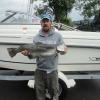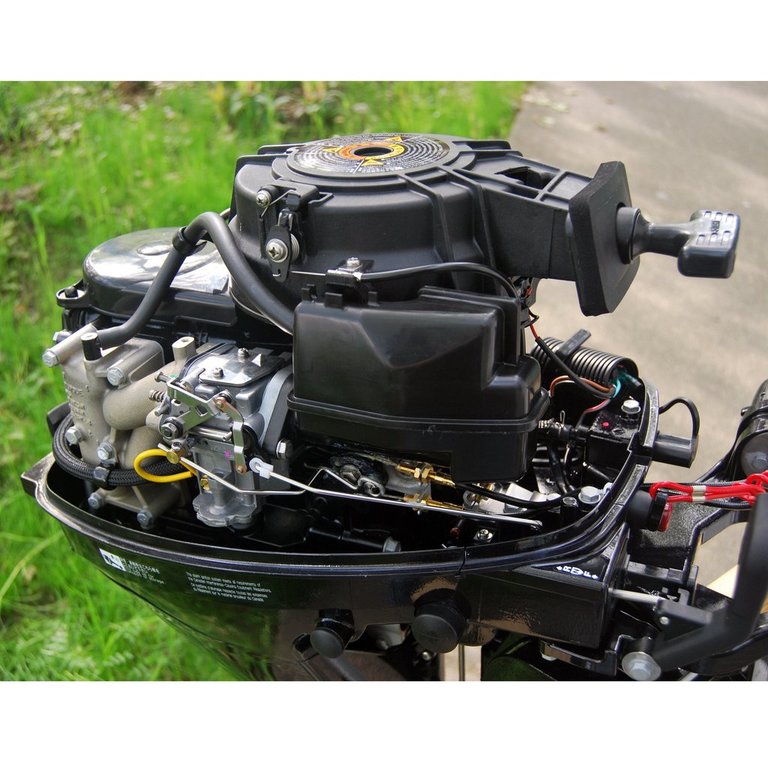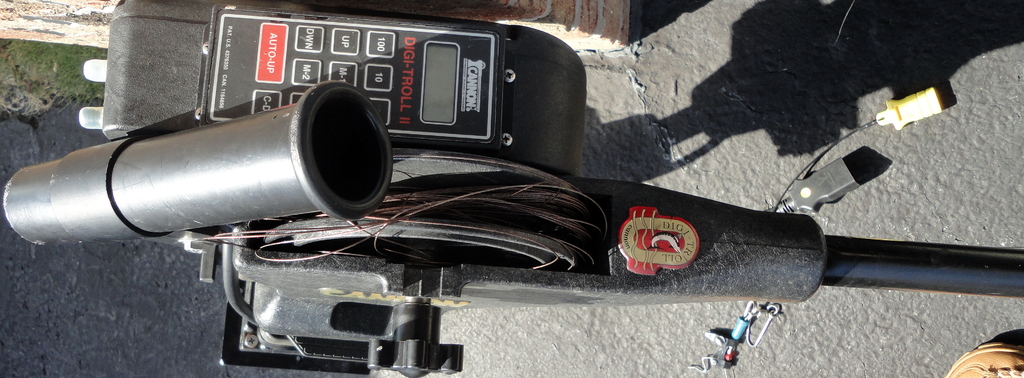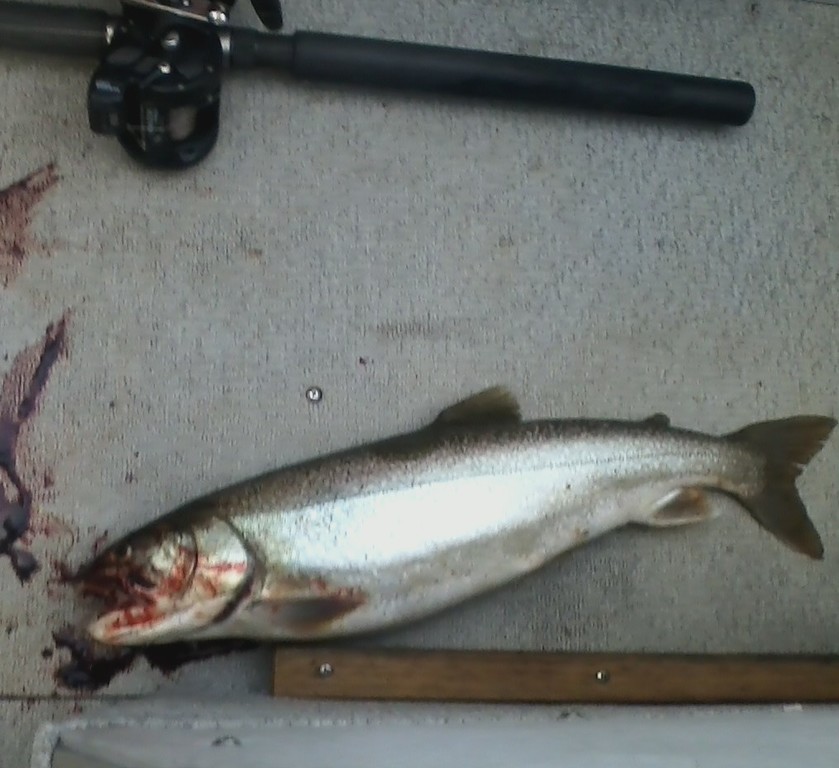-
Posts
13,865 -
Joined
-
Last visited
Everything posted by Sk8man
-
Lewis - for starters with a setting of 3 and a standard size diver I'm pretty sure you are no where near 88-96 ft down. The reference charts also do not take into consideration underwater currents or many other factors that influence the direction and depth of dipseys or anything else attached to a line for that matter as well. Keep in mind that although the #3 setting is advantageous for direction outward it also significantly brings anything attached to it upward and shallower as well. Another often neglected fact is that if the weight on the dipsey is moved PAST the #3 marked on it the diver can even surface it runs so shallow. There is also a point where especially with that setting you can keep letting out line thinking you are achieving greater depth when in fact the dipsey is just going farther out behind the boat and not actually deeper without slowing speed of the boat considerably. I use the 0 size and 1 size dipseys for shallow water applications (e.g. in the Spring and Fall) but for most other times I use the Dreamweaver (used to be Walker) Deeper Divers which have a larger surface area and heavier adjustable weight allowing them to achieve much greater depth with less line out and I use them on wire. Wire usually accrues fleas less than braid (which I reserve for Spring and late Fall when the water temps aren't as suitable for flea concentrations) These divers seem to offer much more control as far as the settings go too and can achieve much greater depth with less line out so that you are closer to where you think you may be. One way to tell whether your diver is doing what you think is to attach a Fishawk TD to the line and let it out and then retrieve it and check the depth it was running at that number of feet out (you'll also be able to see the water temp there as well).You may be shocked by the result As of the other day I was quite surprised to find that many of the trout and salmon are in much shallower water than I expected (i.e. less than 75 feet of water and normally at this point in the season in the Fingers concentrations of them are much deeper and often even out in the middle. The bait was running from 40-65 ft down pretty much wherever we went in the northern section of the lake and in pretty heavy concentrations.....also somewhat unusual for this time of year. What this suggests is that trolling out in the deeper regions may be much less productive than normal and trolling more toward running lines deeper and toward bottom in closer may be more productive (and more risky as well). The trouble with it is you have to be VERY familiar with the bottom contours of the lake or at least the part of it being fished to successfully fish it or avoid hanging up on bottom as there are places where you can be in over 100 ft of water and immediately hit a "wall" 24 ft deep it comes up so fast. It could be difficult in there doing what you desire with a boat as big as yours. The lakers seem to be roaming all over up high in water way off of their usual temps way into the high fifties and sixties (e.g. 35 to 60 ft over whatever).
-
It entails a bit of hands and knees scrubbing but Tilex (e.g. cleaner for showers - thanks Kev) does a real nice job on the non skid floor of my Whaler. I use the non bleach version now after screwing up the knees of my pants with the bleach version
-
Mike I have a 2016 electric start 9.8 Tohatsu and it has more torque than my previous 9.9 2 stroke Johnson which had more speed but less torque than this 4 stroke. This Tohatsu 4 stroke is great for trolling and I no longer need to use my big motor when going into the wind and I don't use any steering connector at all. Top end 6-7 mph vs. 9-10 mph on the old motor but what I wanted was increased steering and torque into the wind while using normal trolling speeds and it delivers.
-
or 6 inches shorter than the total length of the rod you are using. Reason: it is tough to find extensions for your arms when you need to net the fish
-
If you want a deeper and wider range of depths use a Dreamweaver (used to be Walker)124 mm Deeper Diver
-

When technology may not be your best friend :>)
Sk8man replied to Sk8man's topic in Open Lake Discussion
Thanks Brian I always keep a supply for my screwups and I hope that shoulder straightens out bud. I have been through that ((both broken and dislocated at the same time rollerblading ) I felt immediate relief as soon as they reset it in the ER....not fun. We ended with 6 lakers and 1 bow all less than 5 lbs by the way. I guess we both got a little humbled by Cayuga today. I purposely tried to stay away from the lakers by not setting a line below 60 ft and trolling fast and they still came right after things even at 35 ft over 340 -

When technology may not be your best friend :>)
Sk8man replied to Sk8man's topic in Open Lake Discussion
-
When technology may not be your best friend :>) Fished Cayuga today. Near the end of trolling we had a medical situation onboard and I had to very quickly clear 6 lines includig 2 300 coppers and a wire dipsy, and three cheated downriggers. Normally the downriggers work flawlessly despite being older Cannon 10 A's but one wouldn't come up from 35 ft so I had to hand roll it up (thankfully not down 100). We quickly motored to the launch and headed for home (Canandaigua about 40 miles away). When I went to put the boat away I was taking the down riggers off as usual and I looked at the Digitroll II and said WTH (see pic) That downrigger stays active when plugged in and I had forgotten to unplug it and when used earlier I had set it to cycle 5 ft up and then 5 ft down automatically to entice the fish. I forgot and left it plugged in and apparently ti was doing this all the time I was enroute home without the weight on it and while I had secured the terminus so the (new) 200lb wire just kept going over the side of the wheel . Looking for my sharp wire cutters right now
-
Man....you've got me shaking
-
You are a master of simplification Brian (as well as a good fisherman) Thx bud. Only after the silvers so as you know it can be hit or miss
-
semperfi- I think if you incorporate the advice above with my previous post that you mentioned you should be good as that is right in the area that you mentioned you'll be I'd be circling that complete area until I hit either some marks or fish and then keep messing with them. Don't be surprised if you see dorsals sticking out of the water with rainbows and landlocks feeding on bugs....hard to get them to hit but sometimes if you stick at it they will hit the small 2-2 3/4 inch (esp. orange/silver or blue/silver). Can be fun with flyrod ad flies or poppers.
-
Heading to Cayuga tomorrow (Deans) for the silvers. Lake O looks a bit too "iffy". As far as the Black releases I have used them since they came out in the 70's and have tried most of the others. What I found is if you use a scale to set them at about 3 to 3 1/2 lbs (I use an inexpensive luggage scale from Walmart (about$8?) that is supriisingly accurate. The only time I have to mess with them is if running large 11 inch flashers behind and there is strong current (Lake O). The Chamberlains are good too but I just don't feel like re-terminating the three downriggers when I already have something that works. Any info on Cayuga Brian?
-

Blowback
Sk8man replied to Bassin Bob's topic in New York Fishing Reports - Lake Ontario (South Shore)
Another possible variable is the setting on your depth finder if it is on a setting for shallow water e.g. 100 ft or less 200 khz you may be going way outside the cone aangle of the transducer. If you have say a 50 or 83 khz setting with a wider cone angle you may be able to pick up the weights better. -
Again....aluminum or glass boats?
-

Blowback
Sk8man replied to Bassin Bob's topic in New York Fishing Reports - Lake Ontario (South Shore)
For starters you need either torpedo or shark type weights and most likely the problem will be solved.. If not, your transducer needs repositioning. -
-
Just one more straw added to the camels back....
-
It works well for what it is designed. It is not a substitute for the Fishawk 4D by any stretch of the imagination. I use mine to find the thermocline layer for running my rigs on the Fingers by attaching it to my downrigger running it down to say 100 ft while in neutral and then I record the temp chenges in 5 ft intervals, and to determine where things like coppers and leadcores are running by attaching it directly to the line bringing it back in and seeing how deep it ran and what the temp was there.
-
-
I'm with you on that Steve....great reels otherwise but that isthe clincher for me too.
-

Sodus 8-14
Sk8man replied to Nautitroller's topic in New York Fishing Reports - Lake Ontario (South Shore)
Looks like you folks are having a great time John...beautiful day for it too -
Brian it seems as though you are ALWAYS doing it right out there.
-
Matt - the temp range you want to be in is 50-60 degrees and it is running at 30-55 ft down at the north end right now. The cowbells are mainly used for lakers down deep although an occasional silver may be caught with them.. Run small to medium flutter spoons about 30-50 ft behind the boat and troll about 2.4 -2,8 mph making S turns frequently. Start out near the Geneva Golf Club where it drops off to 70-80 ft and troll south on diagonals from 80 ft of water out to about the middle back and forth all up the west side to Reeds Bay and then go back north east all along the east side near the high banks area doing the same trolling on diagonals until you hit fish. Along the way every few minutes raise or lower the riggers 5 ft or so and keep varying your trolling speed. Occasioanlly put the motor at idle for a brief time and then start back up increasing your speed. Good luck.
-
Keep at it you're doing fine
-
Nice going Aaron




